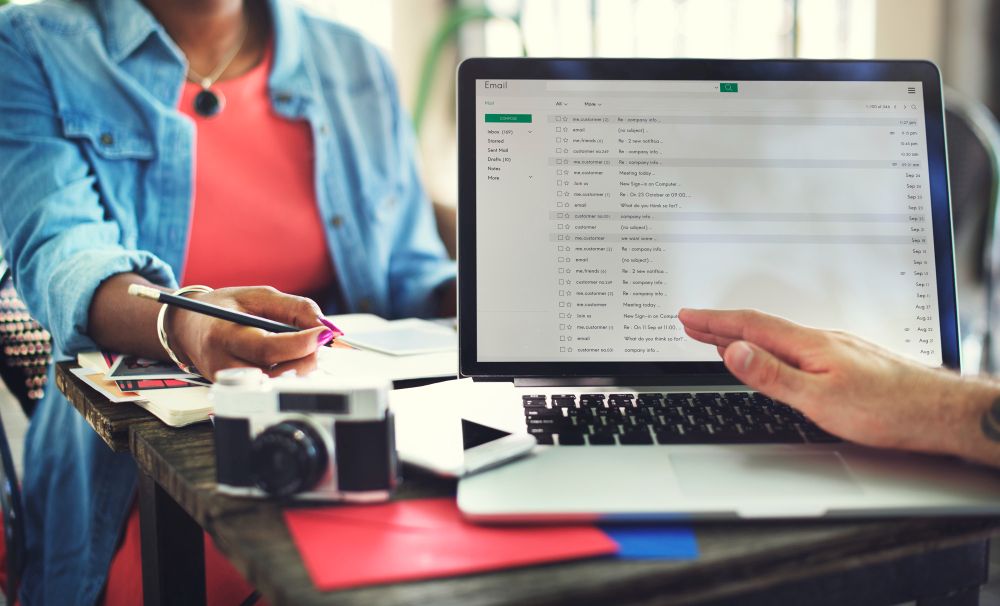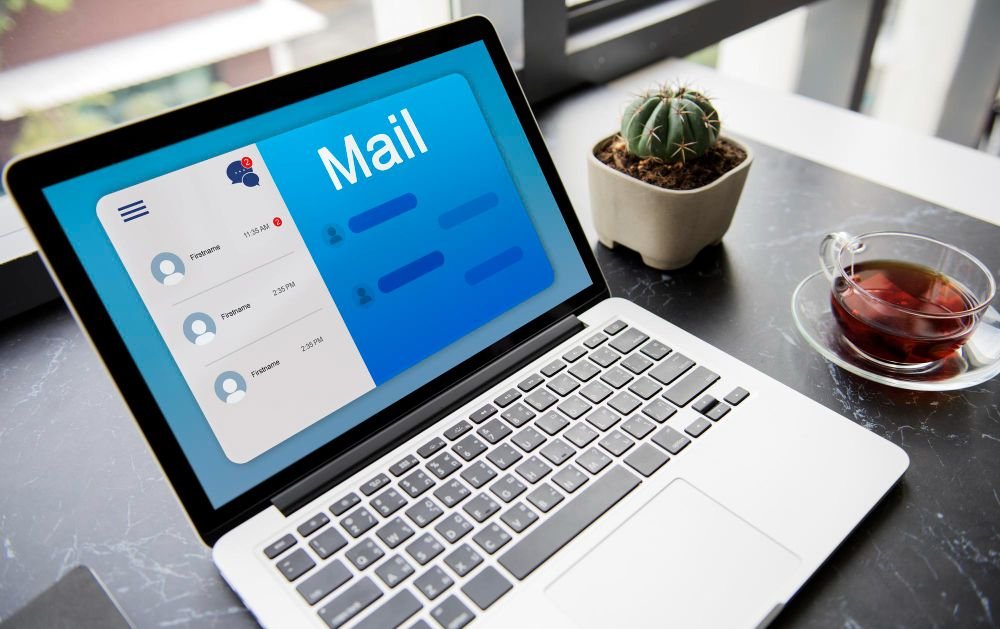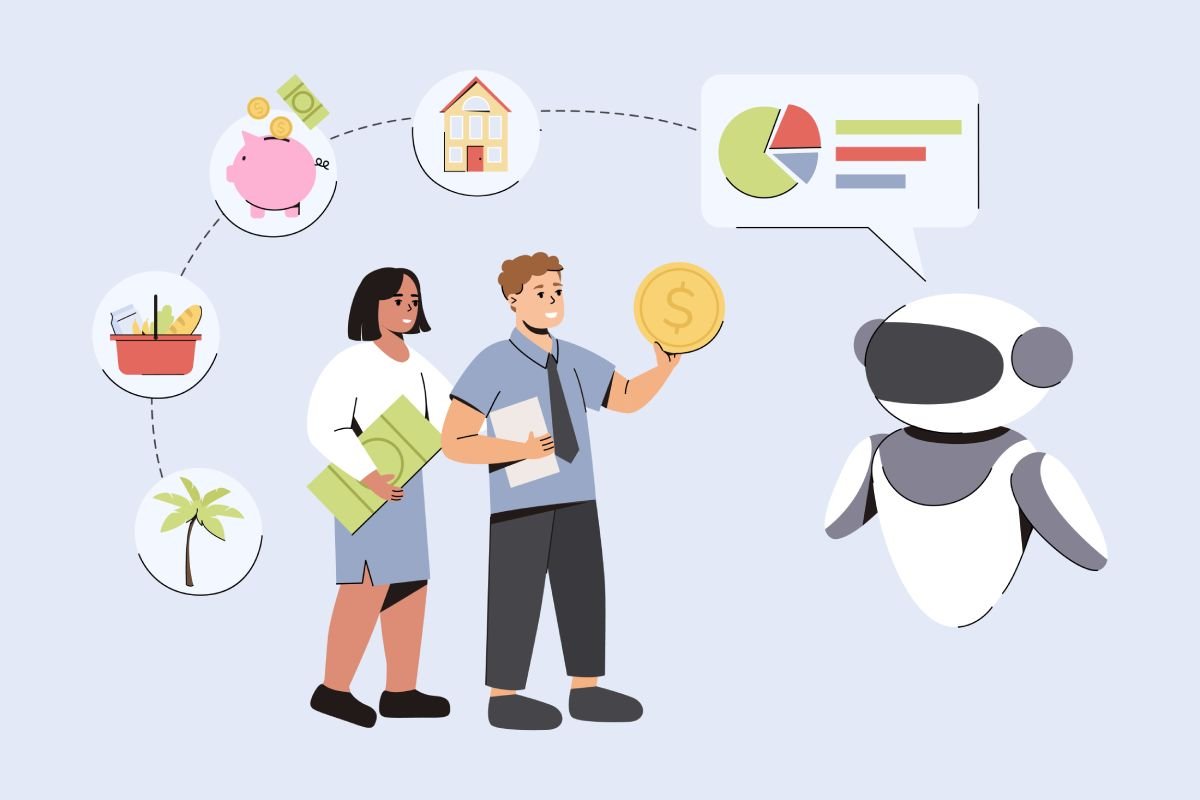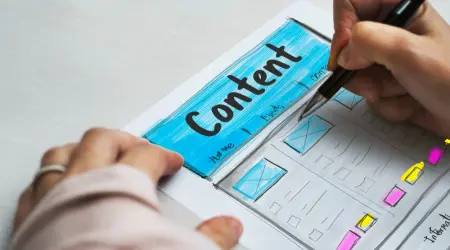

Email Marketing for Consultants: A Guide to Building Trust and Getting Clients
Introduction
As a consultant, attracting new clients goes beyond simply showcasing your expertise; it’s about building trust. In today's digital world, email marketing is one of the most effective tools for fostering that trust. It's personal and direct, and, when done right, it helps you connect with your audience in an authentic and meaningful way.
Email marketing gives you the opportunity to stay in touch with potential clients, nurture relationships, and, over time, turn those connections into long-lasting partnerships. The key here isn’t pushing for a sale right away; it’s about offering value, earning trust, and guiding leads along their journey until they’re ready to partner with you.
However, email marketing isn’t a one-size-fits-all approach, especially for consultants. It's about understanding how to leverage your email list, creating content that speaks to your audience’s needs, and building campaigns that resonate. When done correctly, your emails will do more than sit in inboxes; they’ll convert into real opportunities.
In the following sections, we’ll dive into how email marketing can enhance your consulting business strategy. From growing your email list to creating campaigns that truly drive conversions, we’ll cover everything you need to know. So, please grab a cup of coffee, and let’s get started on taking your email marketing to the next level!
Why Email Marketing is Essential for Consultants

As a consultant, email marketing should be one of your most valuable tools. Why? Because it gives you ownership. Unlike social media, where you're often at the mercy of algorithms, your email list is entirely within your control. You don’t need to worry about your content being buried in a feed or not reaching your audience. If someone is on your list, they’ve already opted in to hear from you. That’s a pretty powerful advantage.
Another major reason email marketing stands out is its ROI. Email marketing provides one of the highest returns on investment among all marketing strategies. Email marketing delivers one of the best returns on investment compared to other marketing strategies.Studies show that for every dollar you invest, you can expect the return of an average $42. If you’re not leveraging email to nurture your leads, you’re missing out on a big opportunity to drive growth.
However, the most compelling reason to embrace email marketing is its ability to foster genuine relationships. With email, you can send personalized, targeted messages that speak directly to the specific needs of your audience. Whether they’re potential leads or loyal clients, it’s not about sending the same generic message to everyone; it’s about creating content that resonates.
Lastly, email marketing allows you to maintain and nurture relationships over time. Even if someone doesn’t become a client immediately, you can keep the relationship going by consistently offering them valuable content. By staying in touch regularly, you position yourself as a trusted advisor, making it easier to convert leads into clients when the time is right.
Building Your Email List: Quality Over Quantity
When it comes to email marketing, not all email lists are created equal. While growing your list is important, it’s far more crucial to attract the right people, the people who truly need your expertise and are most likely to turn into clients..
Think of your email list like a garden. You don’t just want any plants; you want those that will thrive. To attract your ideal clients, offer something of value in exchange for their email addresses. This is where lead magnets come in. These could be freebies like downloadable guides, eBooks, or even a free consultation. These “hooks” incentivize people to opt into your list.
Once you start gathering emails, don’t let them sit there unused. It’s essential to segment your list break it down into smaller groups based on interests, behaviors, and how engaged people are with your content. This allows you to send targeted, personalized emails that speak directly to each group’s specific needs.
For instance, someone who downloaded your free guide on "5 Tips for Effective Client Acquisition" might be further along in their journey than someone who signed up for your general monthly newsletter. By segmenting your list, you ensure that each email is highly relevant to the recipient. This boosts the chances of turning leads into long-term clients. Quality over quantity is key here; focusing on the right audience will always yield better results than simply building a large list of random contacts.
Crafting Emails That Build Trust and Drive Action
Now that you've built a solid email list, it’s time to send emails that make an impact. The goal is simple: you want your emails to build trust and encourage action, all without sounding too "salesy."
Start Strong with the Subject Line
Your subject line is your first shot at grabbing someone’s attention. Make it count! A great subject line should either spark curiosity or promise value. You want the recipient to feel compelled to open your email. Instead of something generic like "Monthly Newsletter," try being more specific, such as "3 Client Acquisition Tips That Actually Work." A clear and engaging subject line makes a world of difference.
Keep Them Hooked with Storytelling
Once your email is opened, it’s important to keep the reader engaged. Storytelling is a powerful tool. Sharing a personal anecdote or a client success story can create a deeper connection. People don’t just want to know what you do, they want to know why you do it and how you’ve helped others in similar situations. This helps build trust and makes your emails feel more like a conversation instead of just another marketing message.
Provide Value in Every Email
Don’t forget to focus on value. Every email should offer something useful, whether it’s a quick tip, a helpful resource, or an insightful case study. Providing value consistently establishes you as an authority and keeps your audience engaged. Remember, it’s not just about what you’re selling; it’s about how you can help your audience.
Have a Clear Call to Action (CTA)
Finally, always include a clear call to action (CTA). Whether you want them to schedule a consultation, download a resource, or visit your blog, make the next step obvious. But avoid being too pushy. A clear, straightforward CTA feels natural and allows the reader to take the next step at their own pace.
Nurturing Your Leads Through Drip Campaigns

With your email content nailed down, it’s time to deepen your relationships with your leads. This is where drip campaigns come in. A drip campaign is a series of automated emails designed to nurture your leads over time. It’s like gently guiding someone down a path, offering them value every step of the way.
Start with a Welcome Series
A great place to begin is with a Welcome Series. This is your opportunity to introduce yourself and your services to new subscribers. Keep it warm and friendly. Avoid diving straight into a sales pitch. Focus on building rapport, sharing your story, and explaining how you help clients. Offering a free resource or a discount on your services is a great way to add immediate value and make new subscribers feel appreciated.
Keep the Connection Going with Engagement Campaigns
After the welcome series, the next step is to maintain that connection through Engagement Campaigns. These are ongoing emails that continue to provide value, whether through blog posts, tips, or success stories. Consistency is key here. You don’t want to disappear after one email and leave your leads wondering what happened. By staying top-of-mind, you position yourself as a reliable resource they can turn to when they’re ready.
Bring Inactive Subscribers Back with Re-engagement Campaigns
What if someone hasn’t opened your emails in a while? That’s where Re-engagement Campaigns come in. These are targeted emails designed to re-engage inactive subscribers. It’s possible they’ve lost touch with your content, but that doesn’t mean they’ve lost interest. A re-engagement campaign reminds them why they signed up in the first place and offers something fresh to spark their interest again. Think of it as a gentle nudge that says, “Hey, we’re still here, and we’ve got something that could help you!”
Personalization and Automation

One of the greatest challenges consultants face is finding the right balance between offering personalized service and scaling their business. This is where Personalization and automation come into play. When done effectively, they allow you to nurture leads and clients without losing the human touch. It’s like having a one-on-one conversation with hundreds of people at the same time, all without sounding robotic.
Dynamic Personalization
Let’s start with dynamic Personalization. This goes beyond simply using someone’s first name in an email. Personalization means tailoring the content based on the interactions your subscriber has had with your business. For example, if someone downloaded a guide on client retention, you can send them follow-up emails with more tips on improving client relationships. Or if they've shown interest in a specific service, provide them with relevant case studies or testimonials that highlight that particular service. This shows your audience that you’re paying attention and genuinely care about offering value that’s relevant to their needs.
The Power of Email Automation
However, personalizing every email by hand can quickly become overwhelming. That’s where email automation becomes a game-changer. With automated workflows, you can send the right messages to the right people at exactly the right time without lifting a finger. Whether it’s a welcome email, a follow-up after a consultation, or a special offer for repeat clients, automation ensures that the relationship continues to grow, even when you’re focused on other tasks.
Behavioral Triggers for a Seamless Experience
Don’t forget about behavioral triggers. These are automated emails triggered by specific actions your subscriber takes, like clicking on a link or downloading a resource. If someone opens an email but doesn’t take the next step, you can set up an automated follow-up that nudges them toward the next action. This creates a very smooth experience that feels personalized and tailored to the individual, without requiring constant manual effort.
At the end of the day, automation helps you save time, but the key is to blend it with that personal touch that makes your emails stand out in a crowded inbox. By combining both, you can scale your efforts while still keeping a genuine connection with your audience.
Maintaining Long-Term Relationships with Clients

Once a client has signed on, your work isn’t done. In fact, this is when the true power of email marketing shines. The focus shifts to maintaining long-term relationships and turning one-time clients into loyal, long-term partners.
Post-Sale Engagement
Post-sale engagement is crucial. Even after a project wraps up, keep in touch by sending valuable content that helps your clients continue to succeed. This might include tips on how to implement the work you've done for them, or industry news that could impact their business. Staying in touch like this keeps the relationship fresh and reinforces your role as a trusted advisor, not just during the sale, but well after it’s finished.
Encouraging Referrals with Email Campaigns
Then there’s the power of referrals. Happy clients are often willing to refer you to others, but you need to make it easy for them. Consider creating a dedicated email campaign focused on encouraging referrals. Offer a special incentive, like a discount on future services for both the referring client and the new one. Word-of-mouth marketing is incredibly powerful, and a well-timed email can encourage clients to spread the word on your behalf.
Fostering Client Retention
Lastly, client retention is where email marketing truly excels. With regular check-ins and personalized follow-ups, you can nurture strong relationships that keep clients coming back. Offer new insights, resources, or exclusive offers that keep them engaged. By consistently giving value and demonstrating that you care, you increase the likelihood of long-term loyalty.
In consulting, repeat business and referrals are often more valuable than one-off projects. Email marketing is the tool that helps you maintain and grow these relationships over time, ensuring that your clients stay loyal and continue to refer you to others.
Common Email Marketing Mistakes to Avoid

Even the best email campaigns can fall short if you're not paying attention to the details. Luckily, the most common mistakes are easy to avoid once you're aware of them.
1. Ignoring Mobile Optimization
One of the biggest mistakes is ignoring mobile optimization. With most people checking emails on their phones, your emails need to be mobile-friendly. If your emails aren’t easy to read on smaller screens, they likely won’t get opened or read. Ensure that your emails have a clean, responsive layout, legible fonts, and buttons that are easy to tap. This small step can greatly increase your engagement.
2. Bombarding Your Audience with Too Many Emails
While consistency is important, overwhelming your audience with too many emails can have the opposite effect. If you're sending daily emails, it might lead to unsubscribes or a disengaged audience. Strive for a balanced focus on sending valuable, meaningful content rather than just sending emails for the sake of it. Remember, quality over quantity always wins.
3. Neglecting Personalization
Treating your entire list as one homogeneous group is another mistake. Personalization is key. Sending the same style message to everyone can make your emails come across as robotic and impersonal. Instead, segment your list based on interests or behaviors and tailor your emails accordingly. Personalized emails feel more relevant and thoughtful, leading to higher engagement and better results.
4. Failing to Track and Optimize Performance
Just because you hit "send" doesn’t mean your job is done. Tracking and optimizing your email performance is essential. Keep an eye on metrics like open rates, click-through rates, and conversions to understand what’s working and what needs improvement. Use this data to refine your strategy and ensure your campaigns are always improving.
By avoiding these common email marketing mistakes, you'll be able to create campaigns that resonate with your audience, build stronger relationships, and ultimately convert more leads into loyal clients.
Conclusion
Email marketing for consultants isn’t just about sending out random messages and hoping for the best. It’s about building trust, nurturing relationships, and guiding your leads through a journey that ultimately leads to them becoming your clients. When done correctly, email marketing becomes one of your most powerful tools, helping you connect, engage, and convert in a way that feels personal and valuable.
The key to success is consistency. From building your email list to crafting insightful content and setting up automated campaigns, every step you take should be aimed at offering something of true value to your subscribers. By incorporating strategies like Personalization, segmentation, and thoughtful automation, you can scale your efforts without sacrificing the personal touch that makes your emails stand out.
So, if you’re ready to elevate your consulting business with email marketing, don’t wait for the "perfect" moment. Start small, test, optimize, and grow. Your future clients are already waiting for you in your inbox.
Frequently Asked Questions
What is the best way to build an email list for my consulting business?
To build an effective email list, offer value upfront through lead magnets like free consultations, downloadable guides, or webinars. Make sure your content connects with your targeted audience, and always segment your list based on interests and engagement levels for better targeting.
How often should I send emails to my clients or leads?
Aim for consistency. Sending one to two emails per week is ideal. Avoid overwhelming your audience with too many emails; instead, focus on providing relevant, valuable content.
What are the benefits of email automation for consultants?
Email automation saves you time and guarantees prompt follow-ups. It lets you nurture leads with personalized content, automated messages based on their behavior, For example, by downloading a resource or clicking on a link, while still maintaining a human touch.
How can I make my email subject lines stand out?
To craft compelling subject lines, focus on curiosity, urgency, or value. Keep them clear and concise, avoiding overly sales-driven language. Personalizing subject lines or including numbers (like "3 Tips for Client Retention") can grab attention.
What is the importance of segmentation in email marketing for consultants?
Segmentation allows you to send highly relevant emails to different groups within your list. By dividing your audience based on behaviors, interests, and needs, you can create more personalized campaigns that resonate with each segment, improving conversion rates.
How can I increase my email marketing ROI?
To boost ROI, focus on sending targeted, value-driven emails, building strong relationships with your audience, and continually optimizing your campaigns. Use automation and Personalization to engage more effectively and convert leads into clients.
Should I include personalized content in my emails?
Yes, personalized content enhances engagement. Go beyond just using the recipient’s name. Tailor your content based on their behavior or preferences, such as the services they’ve shown interest in or the content they’ve downloaded.
How can I prevent my emails from being marked as spam?
To avoid the spam folder, ensure your emails are relevant and well-crafted. Avoid overusing promotional language, regularly clean your list by removing inactive subscribers, and always provide a clear opt-out option. High-quality content and consistent engagement will also help prevent this issue.
How can email marketing help with client retention?
Email marketing is a great tool for client retention. Keep clients engaged by sending valuable content even after a project ends. Consistent updates on your services, success stories, and resources help deepen your relationship and meet their ongoing needs.
How do I track the success of my email campaigns?
Track key metrics such as open rates, click-through rates, conversions, and unsubscribe rates. Use this data to adjust your strategy and improve future campaigns. Regular analysis will help you identify what’s working and where to make improvements.
Related Articles :-
- Marketing Design Essentials: How to Create Visuals That Convert
- How Email Marketing Can Boost Your Chiropractic Practice and Patient Engagement
- Top Market Intelligence Tools to Stay Ahead of Your Competitors
- Real Estate Email Templates: How to Craft the Perfect Email for Agents and Clients




